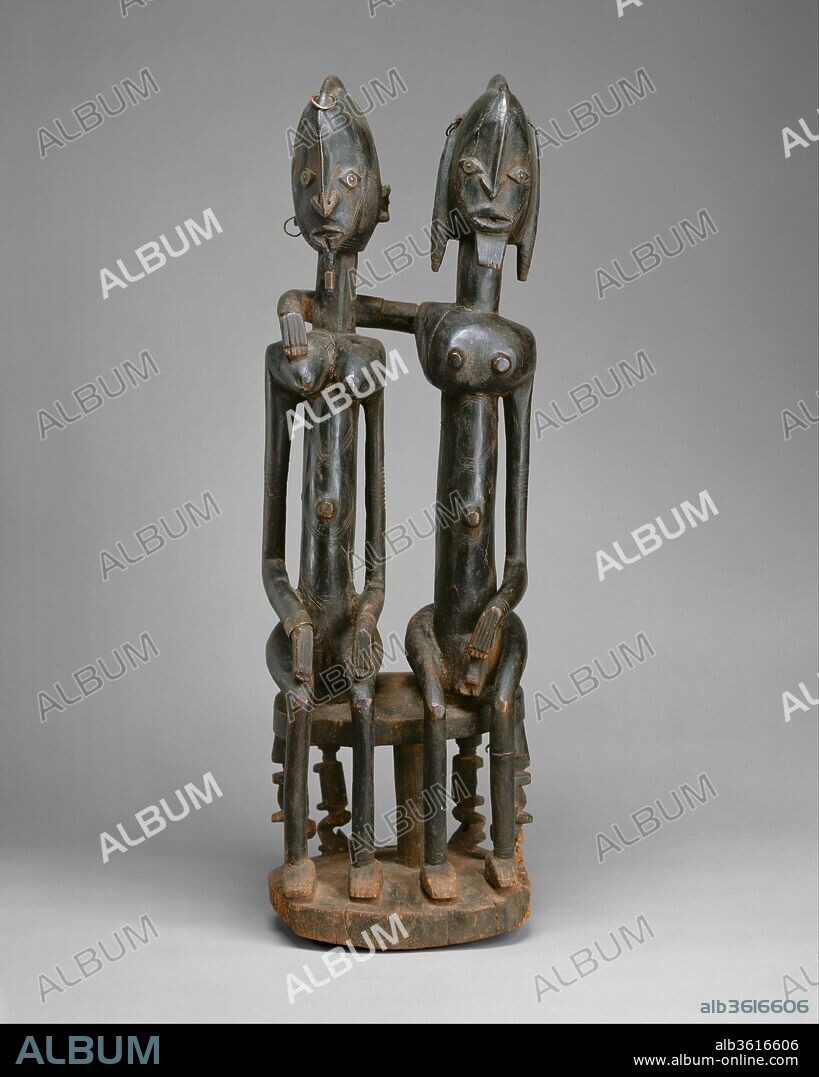alb3616606
Figure: Seated Couple

|
Ajouter à une autre Lightbox |
|
Ajouter à une autre Lightbox |



Avez-vous déjà un compte? S'identifier
Vous n'avez pas de compte ? S'inscrire
Acheter cette image

Titre:
Figure: Seated Couple
Légende:
Voir la traduction automatique
Figure: Seated Couple. Culture: Dogon peoples. Dimensions: H. 28 3/4 x W. 9 5/16 in. (73 x 23.7 cm). Date: 18th-early 19th century.
This work's scale and complexity have led scholars to suggest that it may have been created for display at the funerals of influential Dogon men. The graphic composition constitutes an eloquent statement concerning the distinct and yet complementary roles of male and female partners as a unit of life. With understated elegance and an economy of details, the artistic distills man and woman to a perfectly integrated and harmonious union. One of the most striking aspects of the representation is the degree of bilateral symmetry that describes man and woman as reflections of each other with delicate and subtle departures that indicate their distinct identities. The figures' elongated bodies are depicted as a series of parallel vertical lines traversed by horizontals that draw them together. On the reverse side a small child clinging to the female's back is balanced by a quiver on the back of the male. That concluding pair of features distinguishes their respective role as nurturer and provider joined together to procreate and sustain life.
Technique/matériel:
Wood, metal
Musée:
Metropolitan Museum of Art, New York, USA
Crédit:
Album / Metropolitan Museum of Art, NY
Autorisations:
Modèle: Non - Propriété: Non
Questions sur les droits?
Questions sur les droits?
Taille de l'image:
3276 x 4094 px | 38.4 MB
Taille d'impression:
27.7 x 34.7 cm | 10.9 x 13.6 in (300 dpi)
Mots clés:
 Pinterest
Pinterest Twitter
Twitter Facebook
Facebook Copier le lien
Copier le lien Email
Email
